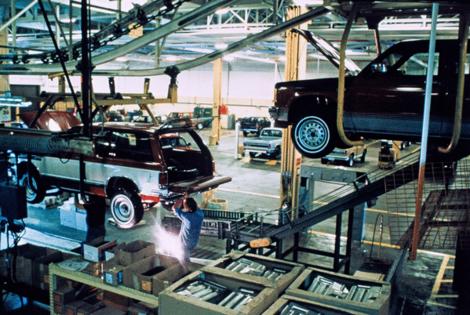Commentary: Old-school manufacturing is gone and is not coming back
Published in Op Eds
The president is fixated on bringing manufacturing back to the United States. The idea to “save manufacturing” makes for good sound bites but does not appreciate how much the U.S. economy has changed from the time when manufacturing jobs were a central part of the workforce.
Looking more closely at U.S. employment trends, the Bureau of Labor Statistics reported over 19.5 million people employed in the manufacturing sector in 1979, representing over 20% of the workforce. That number dropped to around 12.8 million by 2019, or around 8.5% of the workforce. Notably, the U.S. population in 1979 was 225 million people, compared with over 328 million people in 2019, an increase of over 45%. This means that the fraction of the working population engaged in manufacturing has been plummeting for 40 years.
This drop in manufacturing has affected durable goods, such as heavy equipment, and nondurable goods, such as apparel, at similar rates.
Yet the total number of people employed has soared in numerous other sectors. From 1979 to 2019, employment in the education and health services sectors increased from 6.8 million people to 24.1 million people. This includes the delivery of education, which enjoyed a trade surplus of $50 billion in 2023, as well as a wide swath of digitally enabled services. To meet such demand, professional and business services employment nearly tripled, from 7.3 million to 21.3 million people.
Employment follows opportunities, and opportunities follow where money flows. As the U.S. economy has found its niche in providing services, countries that cannot compete in this area have found their own sectors around which to develop their economies.
Given that many forms of manufacturing are labor-intensive, any country where the cost of labor is lower than the cost in the U.S. can exploit such an opportunity.
Yet not all types of manufacturing are languishing in the U.S. The aircraft industry, including engines and parts, had a market size of $219 billion in 2023, with projections of consistent growth well into the future. Boeing has over one-third of this market share, supplying both commercial and defense aircraft. The pharmaceutical industry also contains several top end manufacturers of pharmaceutical products and medical devices, with 45% of injectables and 22% of solid orals currently manufactured in the U.S.
Both the Inflation Reduction Act and the CHIPS and Science Act also supported increased investment in manufacturing.
The problem is that the word “manufacturing” is far too broad to be meaningful. If one thinks of 1970s manufacturing, that ship has long sailed, and efforts to bring it back would be costly and futile. Even finding enough people to fill all the jobs that would be needed would be futile, given the size of the workforce and the unemployment rate. In essence, global competition would place headwinds on such efforts, with limited long-term benefits.
If politicians are serious about growing the manufacturing sector, they have to distinguish which sectors they wish to leave alone or, alternatively, which ones they want to grow. For example, nondurable manufacturing that is labor-intensive, like toys, textiles and apparels, is certain to remain offshore. On the other hand, durable products such as transportation vehicles is an area in which U.S. manufacturing has the potential to be more competitive. Numerous pharmaceutical companies are moving to build up more domestic manufacturing capacity, as tenuous relations with China are likely a key driver for such investments, even if tariffs may be the reason publicly announced.
Given that many of these products have implications for national security, this must be balanced with the cost of increasing manufacturing capacity. An example of this is how influenza vaccine capacity in the U.S. was increased over the past decade based on the 2006 National Strategy for Pandemic Influenza: Implementation Plan. Given the recent ongoing threat of the H5 bird flu, such capacity would become invaluable if the virus were to become established in humans.
Tariffs are not a sustainable solution to redirect all types of manufacturing. For manufacturing capacity that is necessary to support national security, what could be more cost-effective is developing relations and treaties with countries that already have that capacity and support their efforts, rather than using tariffs to threaten their economic stability.
Much like how water settles at the lowest level, different types of manufacturing will naturally gravitate to countries that can deliver products at the lowest cost. Such basic economics are how free markets work. Even when countries manipulate markets and use predatory pricing to starve competition, tariffs may not be the solution, with many other responses available.
In the end, government cannot dictate how industry decides what to do and how to do it. Tariffs may drive short-term adjustments. But with new administrations occupying the White House periodically, priorities invariably shift, with industries and companies ultimately making decisions that serve their best interests.
It is no accident that old-school manufacturing has experienced a steady decline for over 40 years. It is also no accident that many other sectors have seen significant growth and prosperity. Indeed, the law of economics will always prevail.
____
Sheldon H. Jacobson, Ph.D., is a computer science professor in the Grainger College of Engineering at the University of Illinois at Urbana-Champaign. As a data scientist, he uses his expertise in risk-based analytics to address problems in public policy.
___
©2025 Chicago Tribune. Visit at chicagotribune.com. Distributed by Tribune Content Agency, LLC.

























































Comments